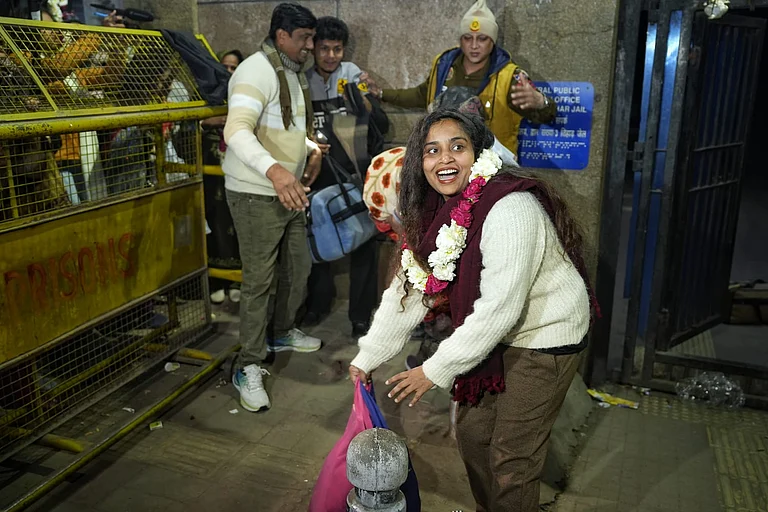A national MPI (multidimensional poverty index) report by NITI Aayog—India’s apex public policy think tank—released late November, that identified Bihar as containing the highest percentage of population living in poverty among all states, has once again raised the perennial question—why does the state remain trapped in poverty and backwardness, and why do deprivation, destitution and distress define its image?
Using UNDP parameters, the report says that with 51.91 per cent population classified as poor, and with the lowest per capita income, Bihar is the worst performer in maternal and child health, housing, water and sanitation, school attendance, electricity, assets and numerous other human development parameters. The perception of perpetual backwardness, caste-based discrimination, semi-feudal relations of production and distress migration still characterises Bihar.
Poverty remains an irresolvable fact of life for millions of people in the fertile and generously watered lands of the state. Scientific poverty experts who set the agenda for policymakers and governments are increasingly discredited for nay-saying, refusing to see the silver lining in the clouds of crisis-ridden agrarian existence. Behavioural change, individual effort and personal responsibility, rather than structural inequalities of skill, knowledge and opportunity, occupy the centre of public imagination. Knowledge about causes, consequences and manifestations of poverty is also shifting towards a cacophony of indicators, and clamour for new forms of data.
Within such shifts and added shadow of the pandemic, should we count and judge why Bihar’s economy was growing steadily at an average of 10 per cent or more for over a decade, while people remained where they were in the early 2000s, farming their small holdings, facing ravages of floods, moving out of the state to work at better-waged destinations, though in menial jobs? Society appeared to be changing in the early growth years; fertility rates were declining, more people were visiting public hospitals and fewer children were dropping out of school. This story is not altered much. In 2019-20, Bihar’s economy grew at the rate of 10.5 per cent (gross state domestic product), higher than the national average, and it was deemed a revenue surplus state.
Growth in Bihar is led by construction and communication, while agriculture grew only by 4.4 per cent in the last five years, while supporting 70 per cent of the workforce. In 2015-16, growth fell to 7.6 per cent. Expenditure on public health is deficient—only one district hospital was built between 2012 and 2019. Some argued the growth story was not sustainable since it was based on high public spending on construction. The World Bank finds Bihar a fast-growing low-income state with inadequate infrastructure, weak governance, low agricultural productivity, low job creation and high poverty levels, especially among Dalits.
Politics in Bihar has been held accountable for the continued misery of the masses. Some argue that caste-based politics has led to misgovernance of the state, while others have described the impossibility of leaving caste out of the discourses of politics and poverty. Bihar moved from a feudal to a vernacular democracy that witnessed backward castes influence within political space. An inversion in political power had its transformative potential but instead it appears to have re-adjusted with rent-seeking opportunities from crumbling institutions and administrative machinery.
With the progression of economic liberalisation, migrant-led mobility has acquired centrestage in discussions and prognosis of development. When the visibility of Bihari culture and cuisine in metropolitan cities became mainstream, it was attributed to the success of the Bihari migrants that gave a new sense of confidence to what was considered a ‘sick’ state. The stigma of being perennially unwell (bimar) was being reversed. The prominence of the Chhath festival was being attributed to the assertion of the downtrodden and the once-stigmatised Bihari migrants in capital cities like Delhi. Recognition of culture, religious heritage and cuisine has only increased with the explosion of social media and mass consumption of cultural practices. The Bhojpuri film industry also grew during this period and is now worth an estimated Rs 2,000 crore, according to a recent Economic Times report.
A Bihar tourism video that went viral in 2016, wove the return of hard-working young men, sons devoted to their steadfast mothers, worshipping the sun during Chhath in a revival of tradition, received 86K views. In TED talks, young men and women from Bihar radiating sub-national pride, motivate others to find alternate paths of success (and happiness) by embracing their apparent lacks or rejections by dominant institutions. The point is to decongest the well-trodden paths that produced intolerable pressure to succeed or die trying. People are impatient—they no longer care about old stories of wealth inequality, caste discrimination, gender subordination and mountain of concerns that social scientific knowledge and peoples’ movements have unearthed, but which state planning or liberalisation has been unable to resolve. Change comes by transforming the ways in which people see their own worlds. Thus, pride, past, identities and promotions become essential features of personal repertoire. Since the world cannot change, we must change ourselves.
Would our visions change if we used a different lens? What kinds of indicators do we need to capture wellbeing, if GDP or HDI are being viewed as inadequate or telling us only part of the story? Happiness indicators to which the world is gravitating is based on individual and subjective perceptions. These are not very good at capturing what some scholars view as consistent transfer of resources from the poor and vulnerable to those who are already secure. Inequality affecting our society has been likened to a virus that is mutable, adaptable, insidious and life-threatening. People cannot judge the benefits of environmental health or equitable society, though poverty and inequality causes hurt, anger and misery.
The moralistic pitch of social commentary that tells everyone, irrespective of their origin, to pursue happiness rather than capability, opportunity or mobility, is a fallacious circular argument. The rich may spend money in pursuit of subjective wellbeing. Where are Bihari farmers and migrants located in the enterprise of happiness? If happiness becomes a measure of wellbeing and the rural person is deemed eternally satisfied in their resilience and adjustments to vagaries of nature and loss, finding purpose, meaning and poetry in their own lives and heritage—would it mean that the story of poverty is finally eradicated from Bihar?

Many dimensions of poverty A Dalit village in Bihar
Where are the solutions for Bihar? Is it in controlling the flow or changing courses of its perennial rivers? Breaching of embankments in 1984 displaced close to half-a-million people; in August 2008, a similar incident repeated the devastation, affecting 35 lakh people. The embankments are old, and every time they break, the party in power attributes it to the erratic courses of these rivers. Climate change experts argue that while rivers are getting stronger, embankments are getting older and weaker. Flood events are no longer 20-30-year-old incidents. As glacial melt swell perennial rivers, Bihar’s vulnerable floodplain dwellers are likely to be marooned and displaced more frequently by sudden deluges.
Bihar’s chronic child malnutrition rate is disturbingly high as shown by successive NFHS surveys. A study in 2013 showed consistent underspending in supplementary nutrition programmes under ICDS. It found that service providers were not accountable, while beneficiaries were unaware of their entitlements. Bihar had the highest proportion of under-5 stunting, as per NFHS IV. Although NFHS V has shown 5.3 per cent fall in child malnutrition indicators in Bihar, overall levels remain alarmingly high. The outbreak of Japanese Encephalitis or ‘litchi death’ drew attention to the unspent budget of nutrition programmes and high endemic malnutrition among children. School closures during the pandemic further disrupted meal programmes. With the latest set of indicators,the debate about revival of development has reopened conversations about Bihar’s struggles in meeting parameters of sustainable development. Under attack, the state government gave two reasons—loss of revenue since the separation of Jharkhand as a new state in 2000—Bihar received the debts, population and agrarian hinterland, while Jharkhand got the cities, minerals and industries. In addition, Bihar got the fury of natural hazards.
Bihar’s crumbling and inadequate health services have come into particular focus during the pandemic-induced chaos. Healthcare needs, demands and expenses have risen, with people utilising whatever healthcare was available, which is itself prohibitively expensive or questionable. Out-of-pocket expenditure on health and medical travel constitutes a high share of peoples’ incomes and keep pushing them into the poverty cycle.
Besides, Bihar’s politics has been transitioning from policy to personality, mirroring the national and global phenomena. From the rustic chief minister who showed the door to caste and class elites, to the one that promised corruption-free efficiency and championed women’s empowerment to international financial institutions, these are leaders of our times. Do they no longer carry the heavy burden of addressing chronic poverty because they have other achievements to share? In 2015, the incumbent chief minister promised to prohibit the sale of liquor in the state, forsaking Rs 5,027 crore in annual state revenues, but gained by consolidating women’s votes. The leader spoke to people directly, from the heart and made revenue sacrifices. But Bihar’s porous borders with other states and Nepal ensure the ban is more cosmetic than real (though NFHS data showed ‘alcohol consumption’ has fallen). This has also led to arrests and detentions of thousands since 2016.
Bihar has been making special efforts to include women in development. In a much-celebrated affirmative action, 35 per cent of positions in government offices were reserved for women. It also hosts the expansive Jeevika programme supported by the World Bank, and several social welfare programmes that involve direct transfers to women. However, women’s workforce participation has been low and declining in rural areas, and women entrepreneurs owned fewer than 2 per cent of all establishments in the state. Early marriage, high fertility and son preference characterise their lives.
Poverty stems from a complex social stratification, insufficient infrastructure, lack of investment strategies and incentives, low productivity especially in agriculture, poor urban-rural differentiation and weak governance. Emerging from this deadlock is not a ride on a six-lane highway. The state would have to play to its undiscovered strengths, embracing the floodplains and agriculture, and supporting and augmenting the diversity and capacities of its youthful population.
(This appeared in the print edition as "Diagnostic Paralysis")
(Views expressed are personal)
ALSO READ
Manish K Jha is Professor of Social Work at TISs, Mumbai
Sohini Sengupta is Assistant Professor of Social Work at TISs, Mumbai
























